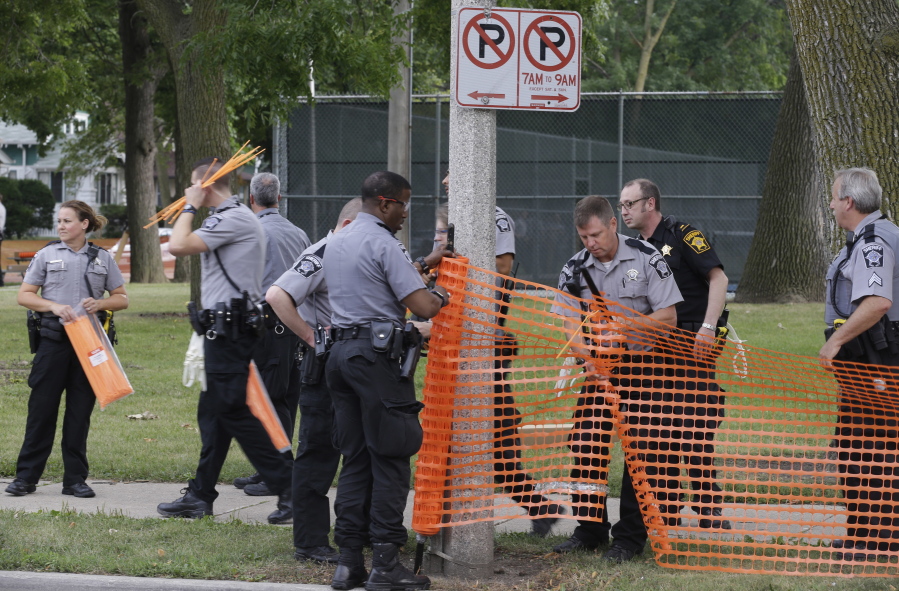The neighborhood rocked by violent protests after a black officer fatally shot a black man was calmer after police pledged to strictly enforce a curfew for teenagers in Milwaukee, the latest place where authorities have invoked decades-old, often little-enforced laws to try to tamp down unrest.
But the measures are controversial, with some people saying curfews violate civil liberties. Researchers also argue there’s little to no evidence that the laws work, particularly when it comes to curbing juvenile crime. And in some cases, they say, the laws only make problems worse in the long term.
“The most useful aspect of a curfew is it gives the public an impression that the police are doing something,” said Kenneth Adams, a criminal justice professor at the University of Central Florida who has studied the laws. “It’s sending the message that ‘We the police are serious about restoring order, and we’re going to take steps.’ ”
Authorities in Ferguson, Mo., issued curfews for all residents in 2014 in response to violence that erupted after a white officer shot and killed a black 18-year-old, a move that angered many in the community who saw it as further mistreatment of blacks. After a man died in police custody in Baltimore in 2015, the city’s mayor imposed a weeklong curfew, saying she did not want to see the city “destroyed by thugs.”
Milwaukee’s enforcement was aimed at teens and followed riots that started after the Saturday shooting of Sylville Smith. Police say the 23-year-old was fleeing a traffic stop and had a gun in his hand when he turned toward the officer, who opened fire. The state is investigating.
Peaceful protests turned violent that night and continued on Sunday evening. Some businesses were set on fire, one person was shot and multiple officers were injured.
Milwaukee has had a curfew law on its books since 1943. It prohibits people under age 17 from loitering in public places between 11 p.m. and 5 a.m. during the summer months, and from 10 p.m. to 5 a.m. Sunday through Thursday during the school year.
The proclamation Mayor Tom Barrett issued Monday expanded the curfew to apply to anyone under 18. It also took effect an hour earlier, at 10 p.m.
“Your teenagers better be home or in a place where they’re off the streets,” he said at a news conference Monday. “This is not the place where you go to gawk. This is not the place where you go to take pictures. This is not the place where you go to drive your car around.”
Police said Monday night was markedly more peaceful, with what the police chief called some “heated confrontations” and six arrests but no destruction of property.
“Last night was a much better night,” said Milwaukee Common Council President Ashanti Hamilton. “I’m hoping we continue down that path.”
Between Saturday night and Monday morning, police reported 31 people were arrested, including three juveniles. After Barrett announced the curfew Monday, 10 people were arrested. One was a juvenile.
Experts caution that while the youth curfew may have had an impact temporarily, they are not generally an effective crime-fighting tool.
Little juvenile crime occurs overnight, said Adams, adding that “you’d get a better bang for your buck” in most communities if a curfew were imposed from 3 to 6 p.m. — when kids are out of school, parents are less likely to be around and young people are more likely to cause trouble.
Enforcing curfews also requires significant resources that could be better put toward other efforts, researchers have found. There are concerns that they are not uniformly or fairly enforced.



